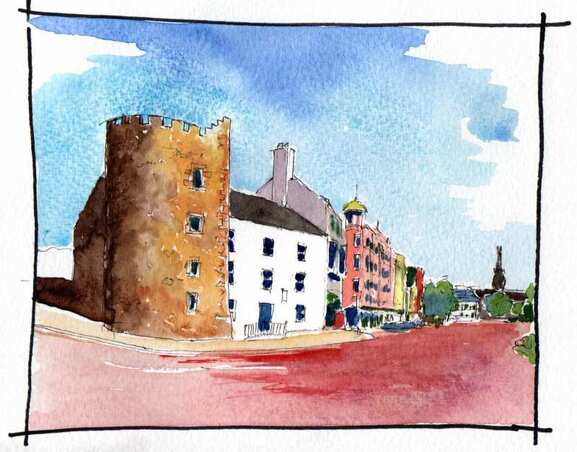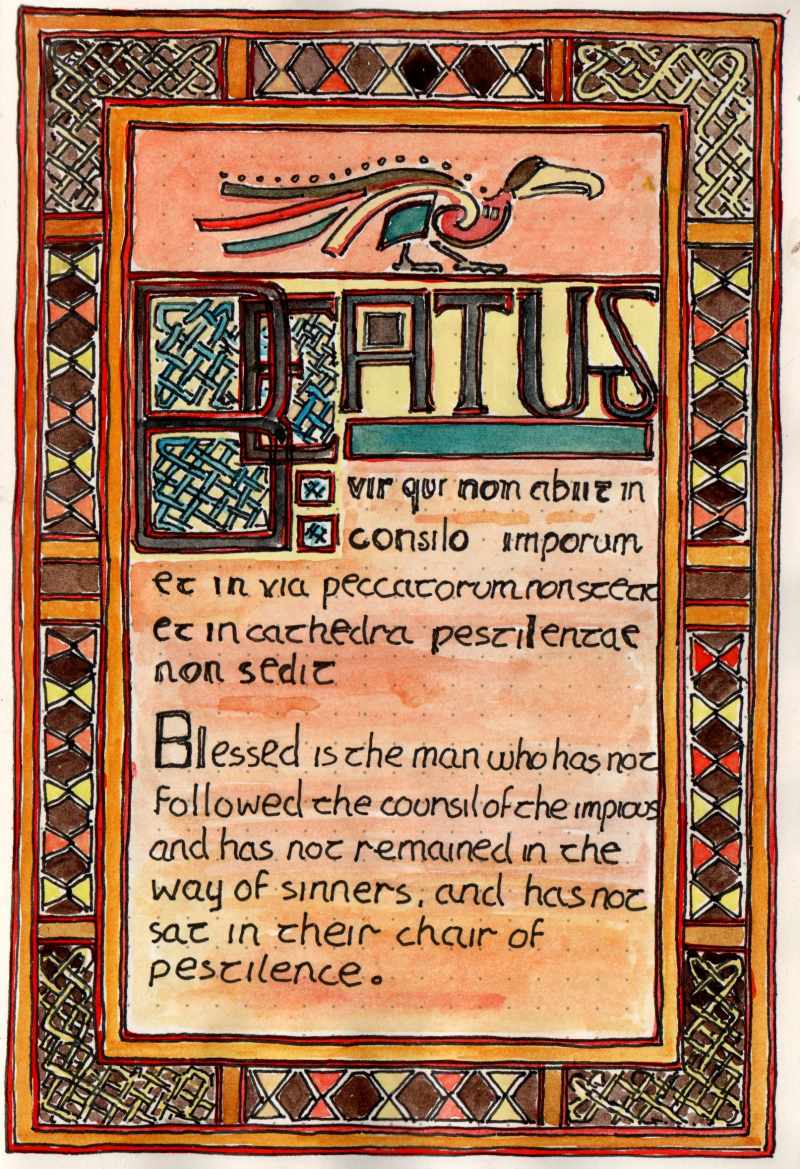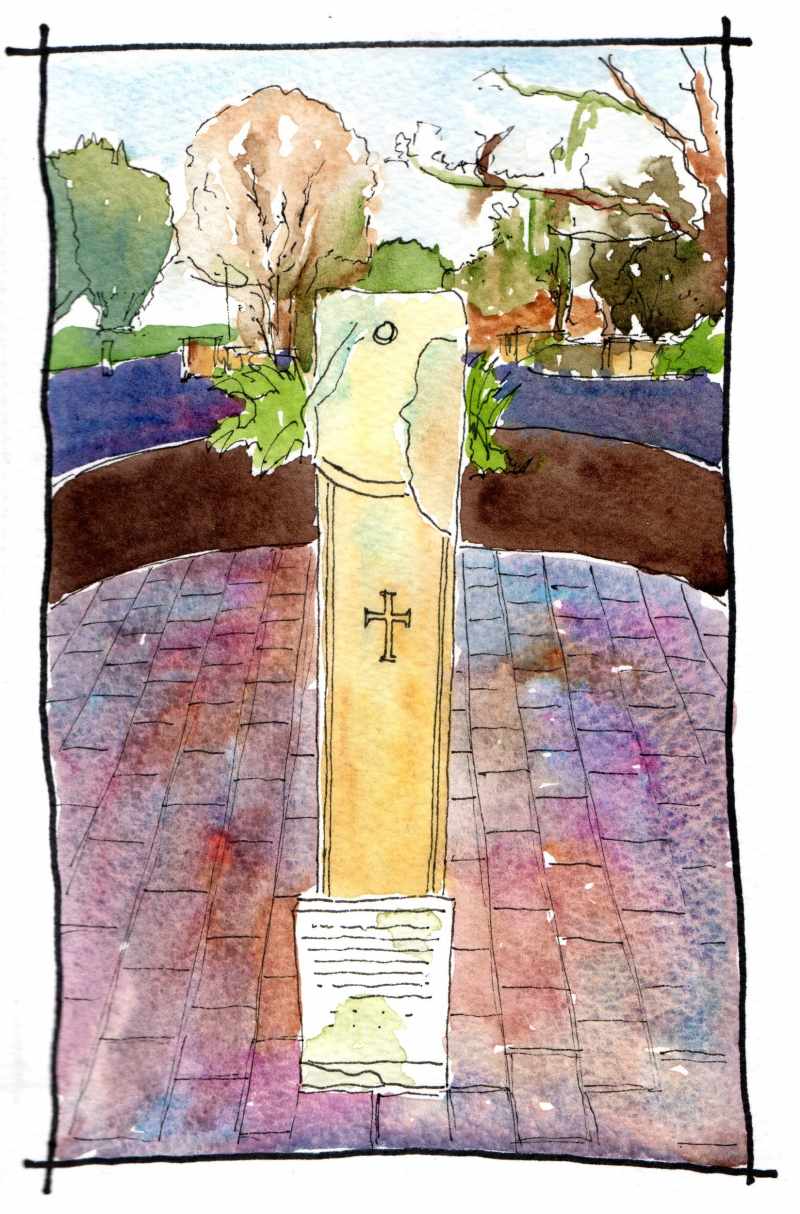|
Dating from 1637, this tower house and attached three story building overlooking Bangor Harbour is the earliest building to survive in Bangor from its layout as a modern town following its granting to James Hamilton by James I in 1605. The white rendered modern looking visitor centre is part of the original construction which is reported to have had a second tower abutting the far gable. These 'flankers' would probably have had conical roofs in the Scottish style, similar to the 'White House' in Newtonabbey (https://www.marksoftime.com/the-plantation.html) The unrendered gable wall behind the tower has a 'crow stepped' finish at the top, an early example of the Scottish Baronial style. Apparently the building may never have been fully completed or used as a customs house (the mid seventeenth century wars may have got in the way). It was in ruins in 1744. Then it was converted into dwelling houses. Used by the coastguard, the battlements may have been added during the Napoleonic period when Martello towers were being constructed elsewhere. It was a photographic studio in the late nineteen century and sold to the town council in 1923. They converted it to hot sea water baths. These closed in 1954. It was then used for an antiques business until being converted into the tourist information centre in 1982. A very unusual and rare survivor.
0 Comments
Happy St Patrick's Day. This image is inspired by a psalter - a book of psalms- dating from c.800AD. Such books were the staple of monks and something similar may even have been used by Patrick. Monks learned off the 150 psalms as part of their training but in Ireland these were often divided in to 'three fifties'. This was the case with the Fadden More Psalter where the first page of each of the fifites was decorated. The psalter was discovered in a bog in Co Tipperary in 2006 having survived hundreds of years in its damp embrace. Painstakingly restored by the National Museum of Ireland over four years, it is now on display there. Only the top right hand corner of the first page can be made out clearly and I have used this to build up this drawing. A translation of the Latin texts given on the bottom half of the drawing.
In front of Bangor Caste is this sundial, clearly relocated from the medieval abby to become an object of interest. A. plaque at the base states: ' This sundial served the important monastery at Bangor. Though damaged it is a survival from the Late Early Christian period, probably the tenth to the twelfth centuries. Three main rays indicated the main daytime services at the third sixth and ninth hours but only the noon ray is now clear. An early sundial has been reconstructed at Nendrum...(illegible) ... Co Down and a third can been seen in Clougher Cathedral Co Tryone' . Given the importance of worship at set times in a monastery, the sundial was a key asset. An amazing survival, given that so little else of the abbey survives.
|
Marks of Time
Sketches of buildings in the North West of Ireland and further afield with a little information about their history. Categories
All
Archives
June 2024
|




 RSS Feed
RSS Feed
